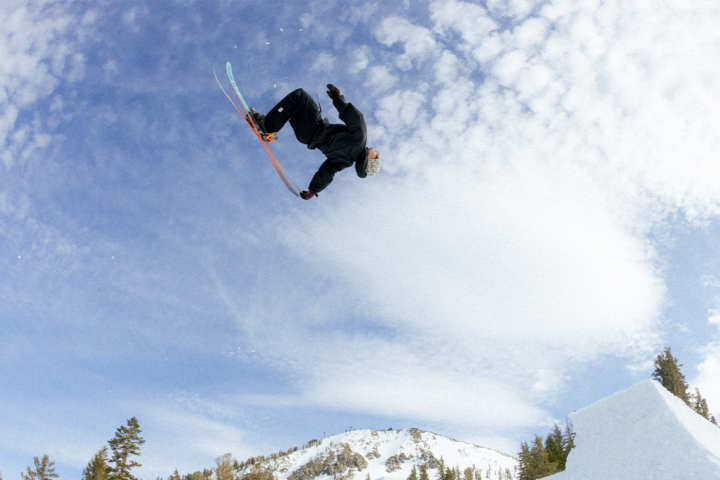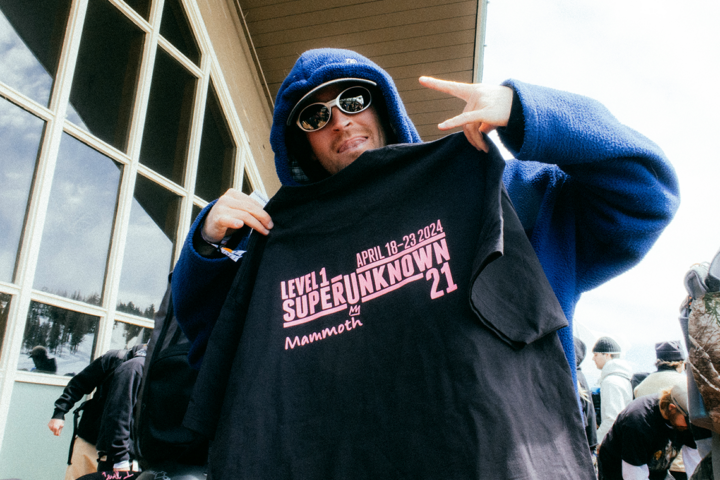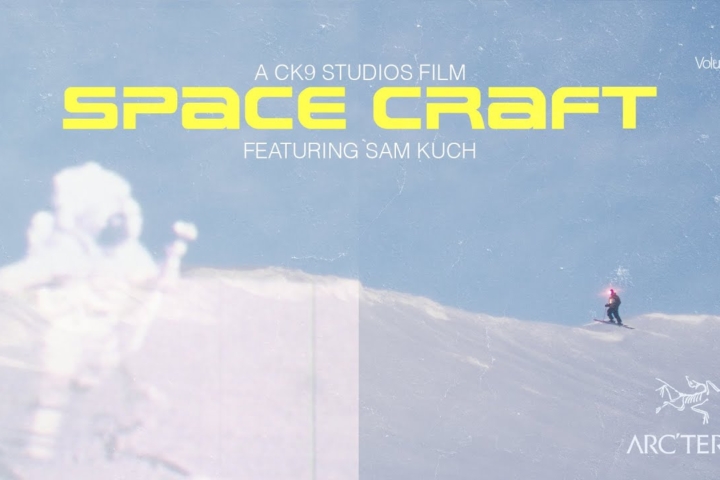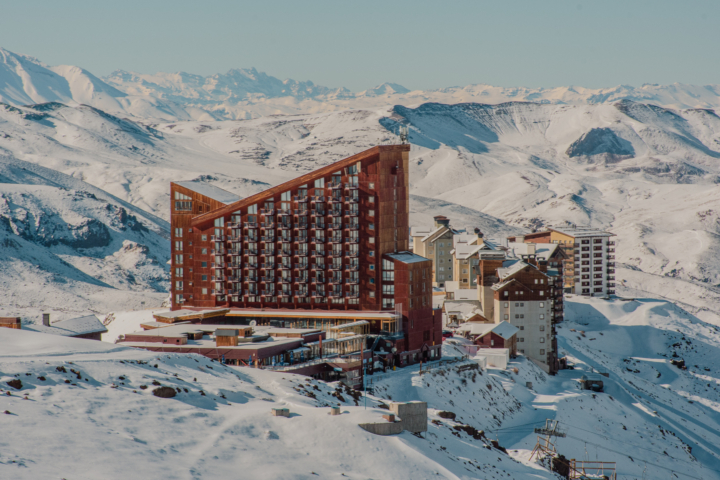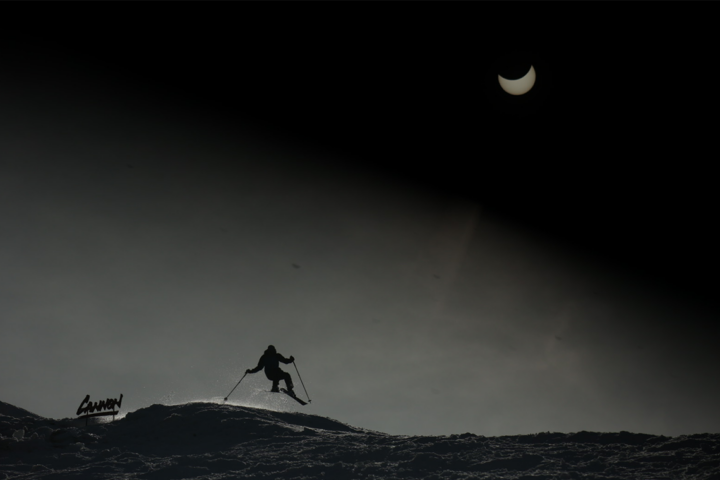For most, it's summertime and unless we’re lucky enough to head to the southern hemisphere, locally found turns are tough to come by. But above the Emerald City of Seattle, the surreal form of Mt. Rainier teases skiers all summer long. Ever-present snow. Just 54 miles southeast of the city, on clear days it seems so close that you could reach out and touch it. With a summit at 14,411 it is the most topographically prominent mountain in the contiguous United States. Slightly bigger than well-known giants like K2.
Seattle-based skier Scott Rinckenberger is a veteran of those aforementioned southern hemispheres and more. He has traveled the world as a skier and his work as a commercial photography assistant and fixer have delivered many helicopter rides and extraordinary opportunities to sample the globe’s best snow. However, “The Mountain,” as they call it here in the Northwest, has eluded him—until two weeks ago. I sat down with Scott to talk about his descent.

CJ: Why Rainier?
SR: Having lived in Washington for my whole life, and having been a skier for most of it, it's impossible not to fantasize about skiing Rainier. As vast and epic as the rest of the mountains in this region are, Rainier towers over them all.
Can you tell me about the route?
We climbed and skied a route called the Kautz Glacier. It is on the south side of the mountain, and leaves from the busy Paradise lodge, but where the majority of parties turn to the east toward Camp Muir and the Disappointment Cleaver route, we headed West across the Nisqually, Wilson, and Kautz glaciers and found relative solitude. The first day was a fairly casual cruise from 5-10,000', and we were able to skin the whole thing. We camped around 10'000 feet on a ridge called the Wapowety cleaver.
The second day we left camp around 3:30am with crampons and ice axes which allowed us to climb the steep faces of the upper turtle snowfield, the Kautz Ice Chute, and the upper Kautz glacier. The Ice Chute and upper Kautz glacier both sported some steep icy pitches which required two ice axes and the front points on the crampons. The ski from the summit to our high camp was really rugged. Big, steep, and icy with high consequences. A small storm had enveloped the mountain during our dawn climb, and once on the summit we encountered some strong wind and snow. This prompted us to start our ski down at 9AM, long before the snow had a chance to soften. We had to make the choice to ski with the decent visibility we had, but on sketchy ice, or risk waiting and losing our viz. We opted to ski while we could see. The snow ranged from hardpack to glazed ice, to frozen suncups, to sharp rime ice. It was skiable, but just barely.
Once we got down to camp, we were a little bit beat down from the hairy ski, altitude, and little sleep. We hung around on the rocks and just rested for a while. When it started snowing at camp we figured we'd better pack up and get back to the car, but as is so often the case in the big mountains, the moment we were packed the sun came out and the mountain smiled on us. From camp we had almost 5000 feet of cruiser corn on the huge snowfields of the lower mountain. It was the exact opposite of the skiing on the upper mountain, and a very welcome change.


What did it take in terms of preparation?
Rainier is a huge mountain that offers skiers and mountaineers every kind of challenge. Route finding, elevation, weather, glacier travel, rock and icefall, steep icy faces, you name it. You really have to come prepared for all of these elements. This means having the proper glacier and climbing skills, researching the route, having the right tools for the ascent and descent, and having the fitness to climb and ski about 9000 feet in some pretty thin air. My partner Brian Fletcher and I both summited Mount Baker (another volcano in Washington elev. 10,778) three times this winter and this helped us to gain comfort and fitness for bigger objectives. Beyond that, we just tried to log as much climbing and skiing as possible so that we'd be strong enough to try Rainier on any given weekend.
How long have you wanted to accomplish this descent?
Skiing Rainier has existed as a vague goal in my head for probably 15 years, but I really got serious about it a year and a half ago. It corresponded with a change in my whole philosophy on skiing that happened about 3 seasons ago. I've been skiing backcountry with the help of lifts, cats, helis, and snowmobiles for years, but was always limited to the range of these tools. A few years ago some friends started taking me out to climb and ski some of the peaks that I have looked at from the ski areas for years but that always felt out of reach. As soon as I had a few of these familiar peaks under my belt, it was like a light switched on and I realized that I could ski almost anywhere. From there it was just a natural progression toward Rainier.


What's next? Was this a training piece or a crown jewel of the Northwest?
Skiing one of the less populous routes on Rainier has been my biggest goal for a while now, and I've ended my season on that note. Looking forward I'm working with the confidence of having accomplished this goal and knowing that many of the other routes on Rainier are attainable. But on the whole I try to take things as they come. There are lifetimes worth of skiing and exploring in Washington state alone, and I just want to keep presenting myself with new challenges and new experiences. Whether this means stepping to a bolder route on Rainier, nabbing first descents on lesser known peaks, or just digging around for fun lines closer to home, I'm happy if I'm out exploring and skiing with my friends.
Having skied all over the world, and being a true Norhwest explorer, how does this peak rank in the scheme of things for you?
This was probably my most important ski descent because it has existed as this hypothetical for my whole life. It's one thing to ski a volcano in Chile that you've only seen in pictures, or to ski lines in Chamonix you've seen in the ski movies. It's another thing entirely to ski the mountain that's been looming over your home state for your entire life. It's extremely satisfying to have finally stepped up to this challenge that is so omnipresent to every Northwest mountain lover.
Will you do it again via a different route?
Yeah, I'll be back to Rainier for sure. There are endless options. In the midwinter you can ski pow from the summit to the Nisqually bridge almost 11,000 feet below. Sounds like a pretty fun run!
How was the glacier situation? Lots of crevasses?
The route we chose, and the huge snowpack we had in the northwest this season made things fairly straightforward from a crevasse standpoint. That said, we were traveling with full glacier gear and probably would have used it if the snow hadn't stayed frozen for as long as it did when we were up there.


Why is Rainer such a tough one to get?
For me it is half about having the skills and conditions, and there was also a kind of mental wall that I had to push through. Rainier has a different reputation than any other mountain in the region and it takes a little bit of work to convince yourself that it's OK to have a go at it. Once you make the decision that you can do it, it's just a matter of catching the right weather window and snowpack so that you can have a safe and enjoyable outing.
How did you celebrate the peak – and post decent? Photos, lunch, cigarette?
It's funny. We were totally worked when we got back to our camp after skiing from the summit, and we talked about just resting a bit and then skiing down and rolling back to Seattle. But when the sun came out during the second part of our descent and we were skiing good corn on huge pitches it was a total game changer. We skied to within 100 feet of the car popped off a couple of photos, and then dipped our hands more than once into the Thule box full of snow cooled beers. By then the clouds had disappeared from the whole mountain and we were free to sit in the parking lot in shorts and flip flops, drink our traditional Rainier beers, and happily study our tracks all the way down the mountain.
One piece of advice for would-be peak Rainier-bound skiers reading this?
Do your homework, be patient when conditions aren't right, stay super fit all season, and when the pieces all fit together, go get it!
____________


